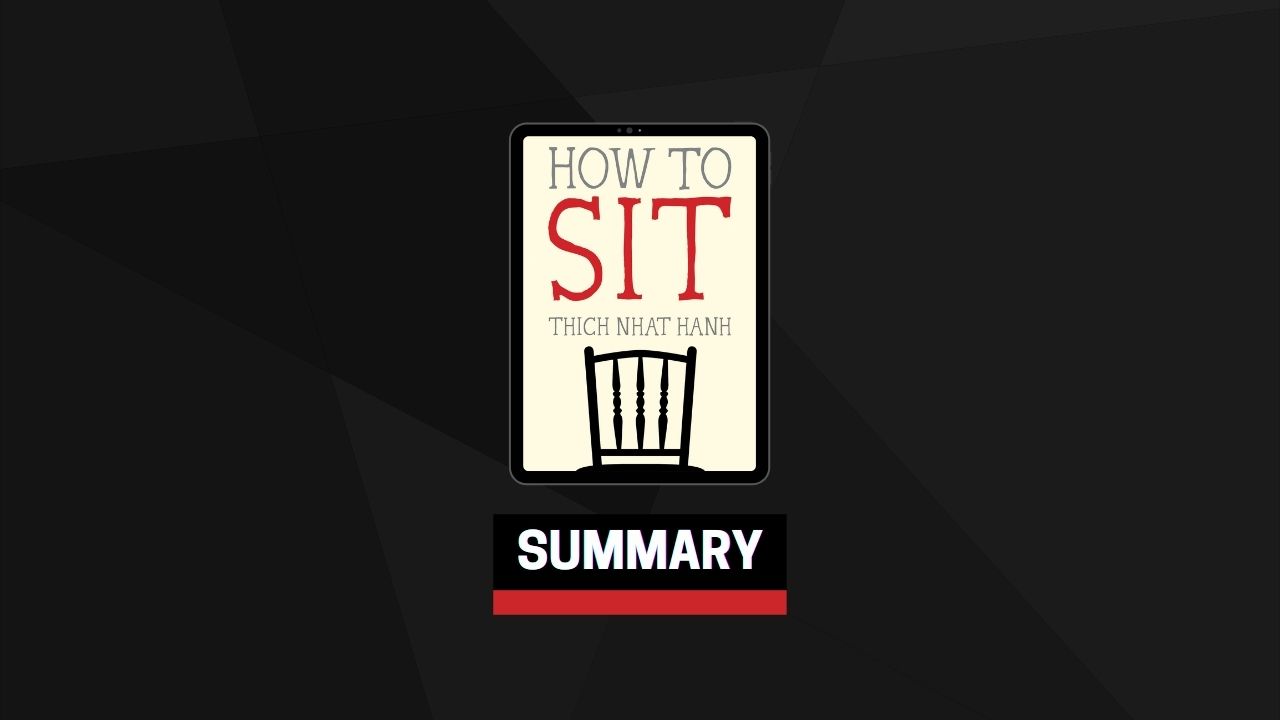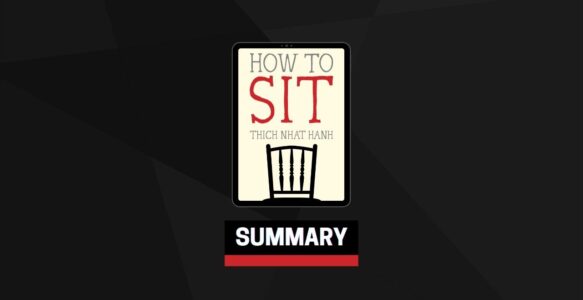Don’t Just Do Something, Sit there
When people say, “Don’t just sit there, do something,” they’re urging you to act. But if the quality of your being is poor—if you don’t have enough peace, understanding, and equanimity, if you still have a lot of anger and worries—then your actions will also be poor. Your actions should be based on the foundation of a high quality of being. Being is non-action, so the quality of action depends on the quality of non-action. Non-action is already something. There are people who don’t seem to do very much, but their presence is crucial for the well-being of the world. You may know people like this, who are steady, not always busy doing things, not making a lot of money, or being engaged in a lot of projects, but who are very important to you; the quality of their presence makes them truly available. They are contributing non-action, the high quality of their presence. To be in the here and the now—solid and fully alive—is a very positive contribution to our collective situation.
Doing Less
Many of us keep trying to do more and more. We do things because we think we need to, because we want to make money, accomplish something, take care of others, or make our lives and our world better. Often we do things without thinking, because we are in the habit of doing them, because someone asks us to, or because we think we should. But if the foundation of our being is not strong enough, then the more we do, the more troubled our society becomes.
Sometimes we do a lot, but we don’t really do anything. There are many people who work a lot. There are people who seem to meditate a lot, spending many hours a day doing sitting meditation, chanting, reciting, lighting a lot of incense, but who never transform their anger, frustration, and jealousy. This is because the quality of our being is the basis of all our actions. With an attitude of accomplishing, judging, or grasping, all of our actions—even our meditation—will have that quality. The quality of our presence is the most positive element that we can contribute to the world.
Enjoy Your Breathing
When you sit down, the first thing to do is to become aware of your breathing. Becoming aware of your breathing is the first step in taking care of yourself. Becoming aware of your in-breath and out-breath, you can see how your breath moves through your body. You begin to take care of your body and your mind, and you begin to find joy in the very simple act of breathing. Every in-breath can bring joy; every out-breath can bring calm and relaxation. This is a good enough reason to sit. We don’t need to sit with an intention like getting smarter or becoming enlightened. We can sit just to enjoy sitting and breathing.
Why Sit?
When we sit, we bring joy and nourishment to ourselves and to others. Every time we sit, we can sit in such a way that the world can profit from our sitting. We are solid. We are relaxed. We are calm. We are happy while sitting. We sit as if we are sitting on a lotus flower, not on a heap of burning charcoal.
Arriving Home
When you sit, sit in such a way that you feel you have already arrived. To sit doesn’t mean to struggle. When you sit, sit so that sitting becomes an arrival into the present moment. Enjoy your arrival. How wonderful to have arrived. How wonderful to feel that you are home, that your true home is in the here and the now. Sitting like that, joy and peace become a reality. You radiate this joy and peace and it benefits everyone around you.
Sitting Comfortably
When you sit, keep your spinal column quite straight, while allowing your body to be relaxed. When your sitting posture is relaxed and stable, you can sit comfortably for a long time. You embody solidity and this helps your mind to be calm. A stable posture grounds body and mind. Sitting still, we minimize the actions of body, speech, and mind so we’re not pulled hither and thither by thoughts and feelings in which we might otherwise drown.
Ease
Sit in such a way that you feel completely at ease. Relax every muscle in your body, including the muscles in your face. The best way to relax the muscles in your face is to smile gently as you breathe in and out. Don’t make a great effort, or struggle, or fight as you sit. Let go of everything. This prevents backache, shoulder-ache, or headache. If you are able to find a cushion that fits your body well, you can sit for a long time without feeling tired.
Sitting is a Practice and a Luxury
Sitting is a practice. The kind of sitting we’re used to doing is sitting in order to work at our computers, to be in meetings, or to space out in front of a screen. So we have to practice sitting just to be with ourselves without distractions. In our time, in our civilization, sitting and doing nothing is considered either to be a luxury or a waste of time. But sitting can produce the most nourishing calm and joy and we can all afford some time to sit. How wonderful to sit and do nothing.
Sitting Together
Sitting alone is wonderful. Sitting with a friend makes meditation easier. There is a Vietnamese phrase that goes like this: “When you eat rice, you need to have soup.” When you practice mindfulness, you have to have friends. When we sit together, we create a collective energy of mindfulness that is very powerful. When we sit with others, we profit from their quality of being and we profit from everyone’s practice. We don’t need to say a lot, but we become a collective organism and together we produce insight. When we sit together, each one of us contributes to the quality of the whole.
This collective energy is more powerful than our individual energy. Sitting together is like allowing the water in the stream to be embraced by the ocean. When we hear the sound of the bell, everyone is breathing mindfully amd creating a collective energy of mindfulness. The collective energy is very supportive and effective in helping us gain insight and transform difficulties. As a practitioner we can benefit from that energy to help us embrace our pain and our suffering. You can say silently, “Dear brothers and sisters in the Sangha, this is my suffering. Please brothers and sisters, please help me to embrace this pain and this suffering.”


